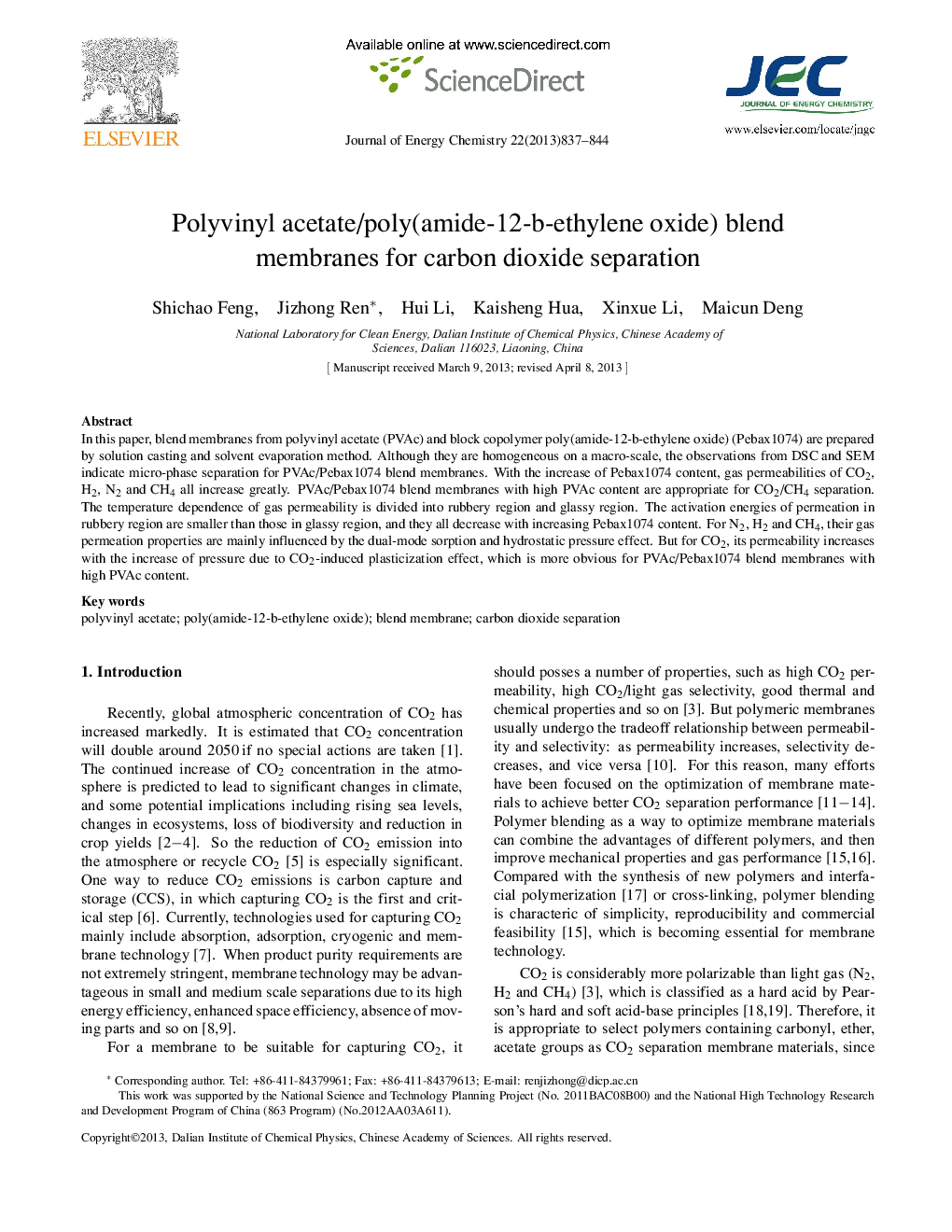| Article ID | Journal | Published Year | Pages | File Type |
|---|---|---|---|---|
| 63957 | Journal of Energy Chemistry | 2013 | 8 Pages |
In this paper, blend membranes from polyvinyl acetate (PVAc) and block copolymer poly(amide-12-b-ethylene oxide) (Pebax1074) are prepared by solution casting and solvent evaporation method. Although they are homogeneous on a macro-scale, the observations from DSC and SEM indicate micro-phase separation for PVAc/Pebax1074 blend membranes. With the increase of Pebax1074 content, gas permeabilities of CO2, H2, N2 and CH4 all increase greatly. PVAc/Pebax1074 blend membranes with high PVAc content are appropriate for CO2/CH4 separation. The temperature dependence of gas permeability is divided into rubbery region and glassy region. The activation energies of permeation in rubbery region are smaller than those in glassy region, and they all decrease with increasing Pebax1074 content. For N2, H2 and CH4, their gas permeation properties are mainly influenced by the dual-mode sorption and hydrostatic pressure effect. But for CO2, its permeability increases with the increase of pressure due to CO2-induced plasticization effect, which is more obvious for PVAc/Pebax1074 blend membranes with high PVAc content.
Graphical AbstractThe temperature dependence of gas permeability is divided into rubbery region and glassy region due to the transition of PVAc phase from glassy to rubbery state.Figure optionsDownload full-size imageDownload as PowerPoint slide
